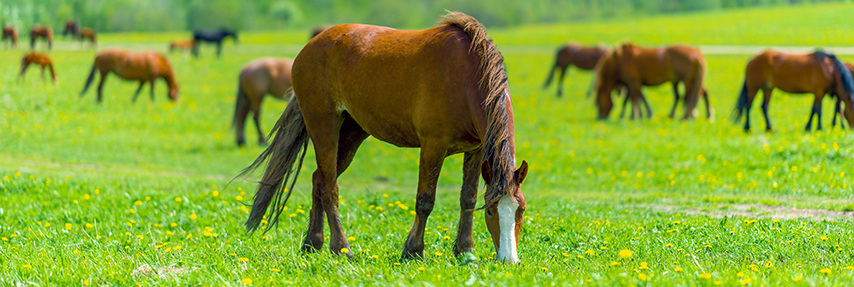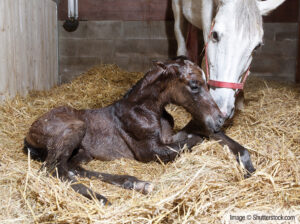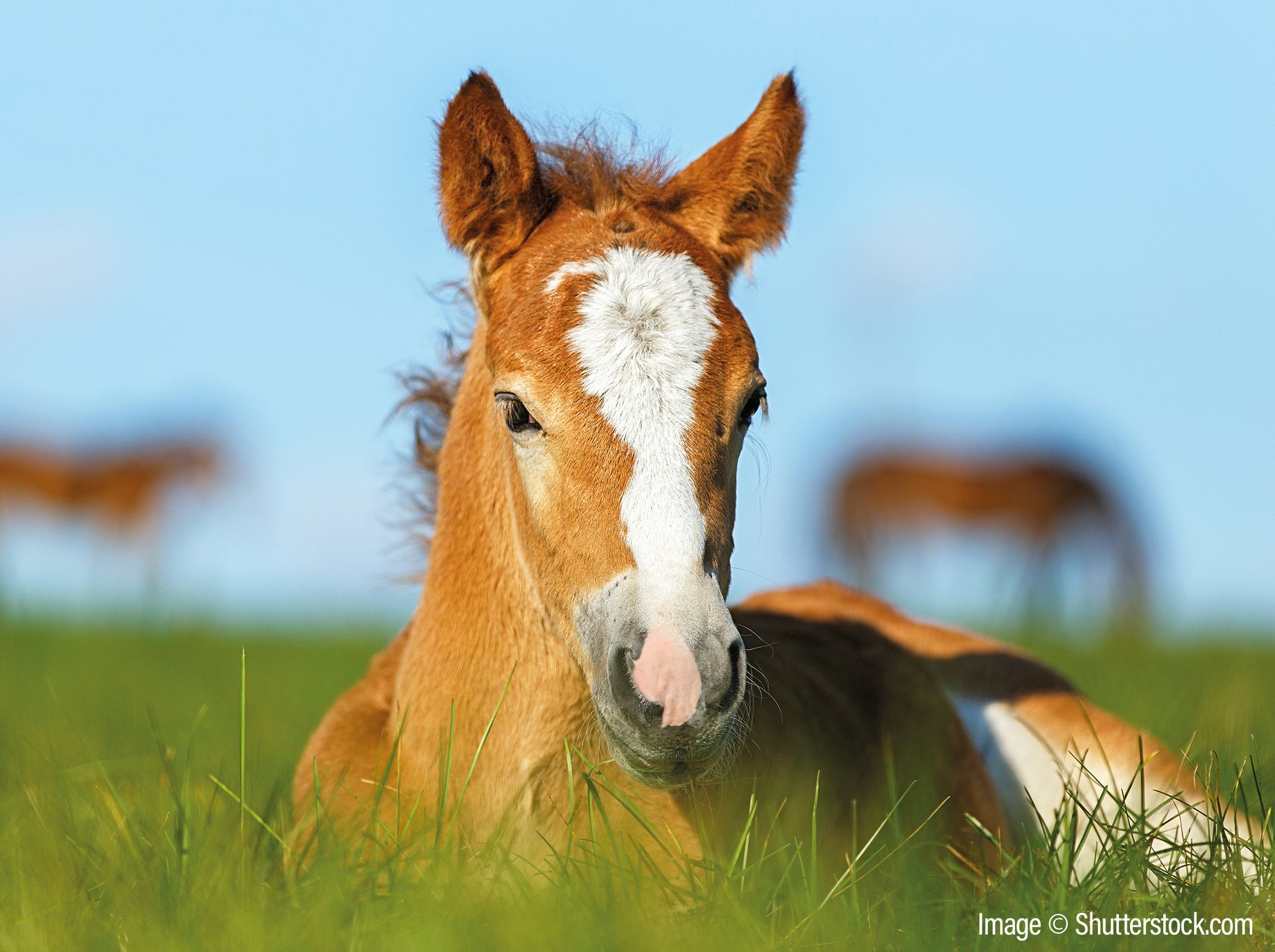The actual procedure of Artificial Insemination (or AI) is very straightforward. However, meticulous planning and preparation is required before this point to maximise the chances of your mare becoming pregnant. At this point it may be worth saying that individual mares vary in their ability to conceive, just as humans do. For example, young mares find it easiest and fat mares may struggle. Thoroughbreds may not be bred by AI for Wetherbys registration.
Most mares start cycling (coming into season) in the springtime. It is good to start as early in the year as possible, since if the mare were to have any problems we would then have more time to try to fix the problem before the mare stops cycling in late summer. She is then lost to breeding until the next year. Mares may be forced to start cycling earlier by starting a controlled lighting programme in December. A mare will normally come into season every 21 days – it helps to know your own mare’s pattern, perhaps marking her seasons on a calendar – though clearly some mares are more demonstrative than others!

Before Beginning
Although there will be no physical contact between mare and stallion, it is still good practice to check the mare for infectious diseases; there is no point wasting a lot of time and money trying to breed a mare who will not conceive. At the start of the breeding season we will take a clitoral swab. The mare does not need to be in season. At the start of the season (oestrus) that the mare is to be inseminated during, we take a swab of the cervix, and also look at a smear of the cells under a microscope.
Which Semen?
Semen for AI can be broadly divided into three categories:
Fresh: Usually used when the mare is boarding at the stud where the stallion is standing. It will not survive long, so must be used almost immediately.
Cooled: The most commonly used form. Can be transported as sperm will survive for 24h or longer.
Frozen: May be stored for years, but many sperm cells do not survive thawing, so the stallions sperm must be of very high quality to ensure enough viable, fertile sperm remain. Not all stallions semen is suitable for freezing. Timing of insemination is critical. Makes using non-UK based stallions a possibility, but semen needs an import certificate.
Stallion
Once you have found a stallion you like, a useful checklist to ask the stud is as follows:
- Cost of collection of semen from stallion
- Cost of preparing semen for shipping
- Which days of the week the stallion is collected from
- Any times the stallion is not available
- What type of delivery they use.
Also useful to know is: Semen longevity for that stallion 1st cycle conception rates. How suitable is that stallion’s semen for the three types of insemination. The stallion should have been screened for disease too.
The stallion owner needs notifying as the mare comes into season, preferably sooner!

Timing
It is imperative that the mare is inseminated at the optimum time to give her the best chance of becoming pregnant. We need to scan her frequently to predict this time with accuracy. How frequently depends on the type of semen to be used.
Cooled: The mare will be scanned every day, and possibly twice a day as she approaches ovulation. The best time to inseminate is in the 24hrs before she ovulates, or just after. She is then scanned 24hrs later to check she has ovulated.
Frozen: The mare is scanned every 8 hours. She must be inseminated from 12 hours before she ovulates or up to 6 hours afterwards. A hormone to help ovulation is given at this time. She is then scanned 12 hours later, and may need to be inseminated again if ovulation did not occur when predicted.
Detecting a Mare’s Season
Some mares let the whole world know when they are in season, others show a little more decorum! To detect her season a ‘teaser’ can be used, or we can scan with our ultrasound machine every few days until she starts to show changes which tell us she is coming into season. We also look at her cervix using a speculum. Our examinations from this point are predominantly directed towards predicting when your mare will ovulate, to increase the chance of success.
When we scan we look at the uterus (womb) and ovaries. The uterus undergoes characteristic changes throughout the cycle, and the ovaries develop follicles. One of these follicles should grow larger than the rest (known as the ‘dominant follicle’), and this will release the egg at ovulation. We also will perform an internal examination to detect changes in the cervix. As ovulation approaches it becomes relaxed and swollen (oedematous).
When the dominant follicle is large enough (usually 35mm) we administer a hormone to induce ovulation – and the majority of mares will ovulate 36 to 48 hours later. Semen is normally ordered at this point – hence the importance of finding out which days the stallion is collected from, and also the studs weekend arrangements for delivery etc. Your mare may decide she wishes to ovulate at the weekend! We can work around this as long as we know! We will scan the mare to check she has ovulated usually the next day.
Insemination at the Clinic
Mares may board with us at the clinic, where we can offer a fixed price for the whole procedure. This is safer for the mare, and us, as she can be restrained in our stocks. This also facilitates frequent scanning and obviously saves on visit fees, and possibly sedation fees.
Pregnancy rates are generally lower with artificial insemination using frozen semen than with natural covering, however fresh or chilled semen can give similar conception rates to natural service. Actual percentages are difficult to give as individual mares and stallions have different fertility rates. Stallions particularly from whom semen is frozen must have a very high concentration of normal sperm that are capable of surviving freezing and thawing to be suitable for this type of insemination.
Advantages of AI compared with natural covering include: removal of the need to travel the mare to the stallion, the ability to use stallions that are resident outside the UK and a reduction in the risk of uterine infections. There is also a reduction in the risk of physical injury to the stallion or mare. Deceased stallions may have semen saved in frozen form which can be used for years to come.
Last reviewed May 2019
